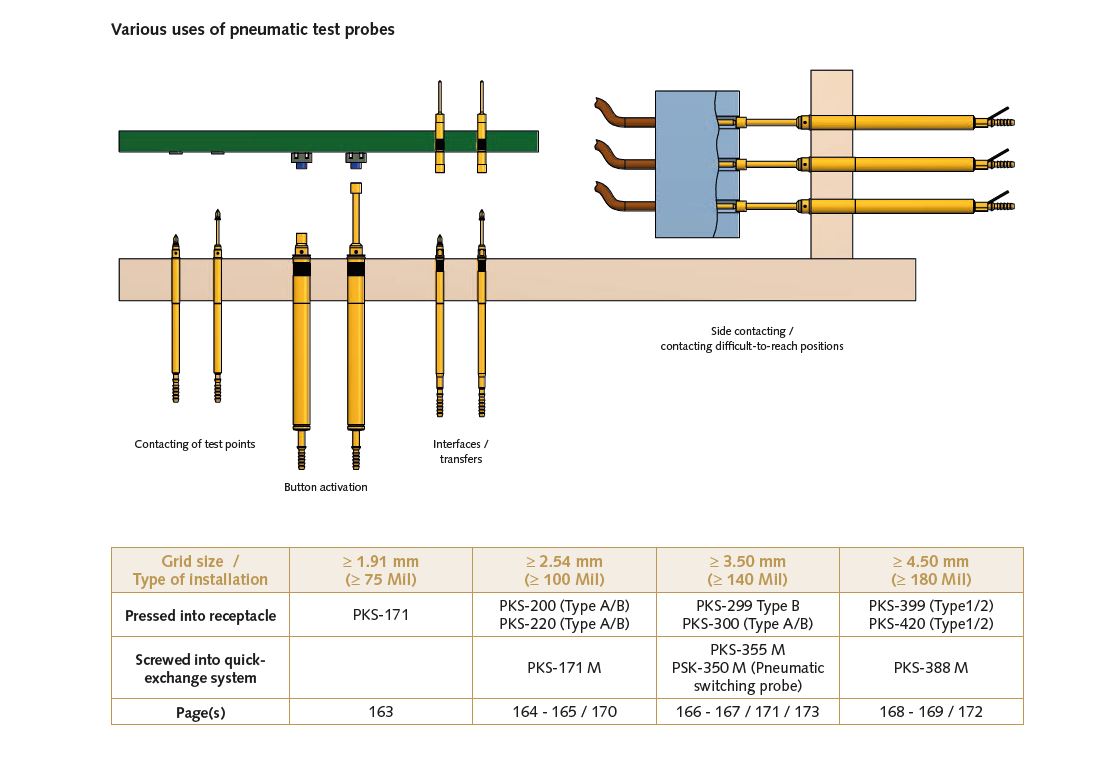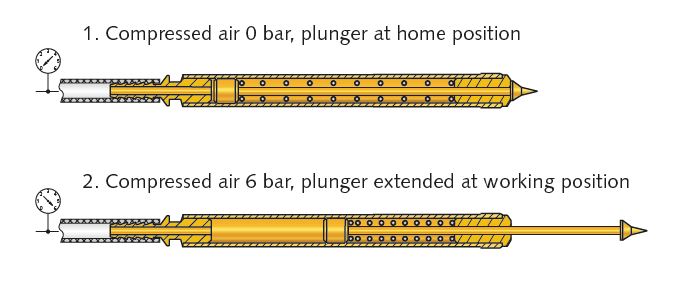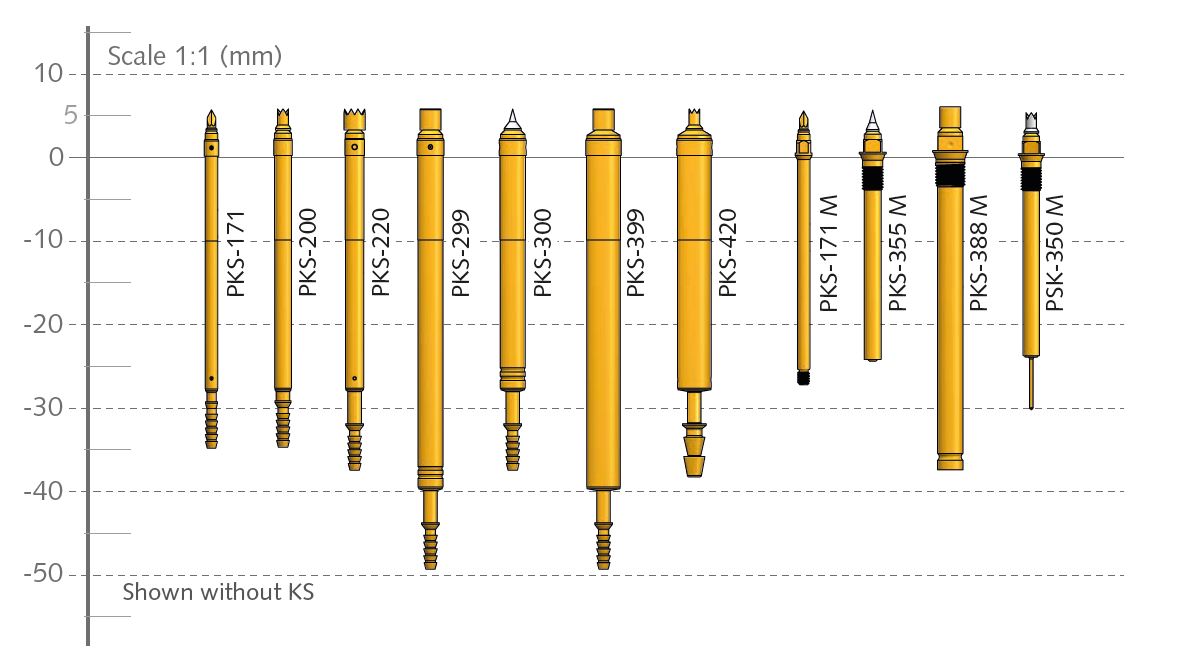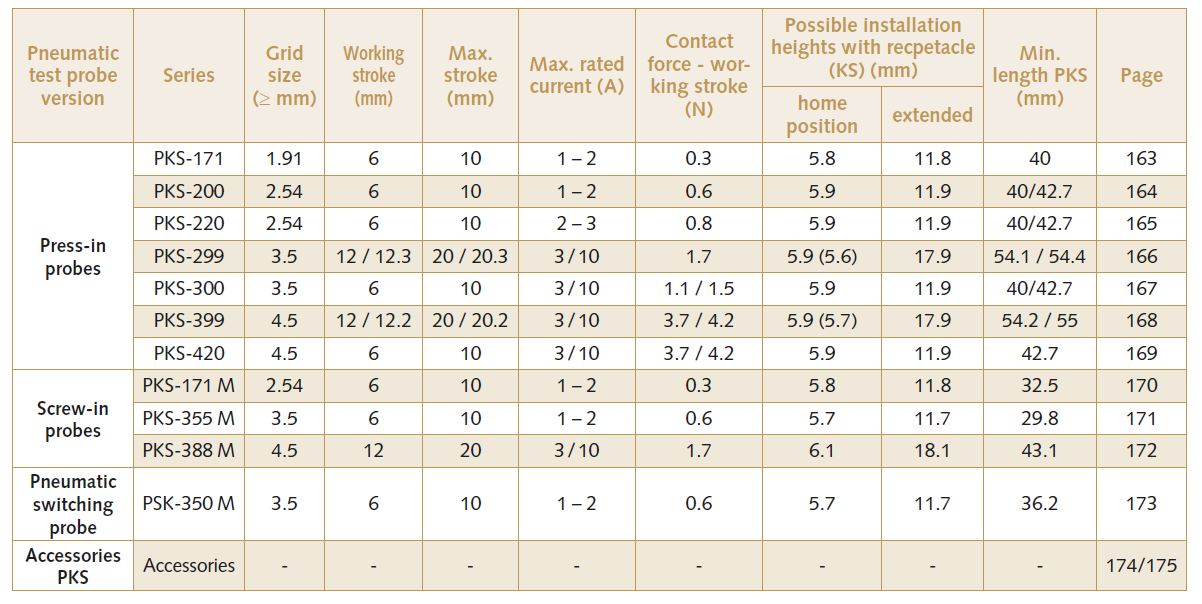PNEUMATIC TEST PROBES
Pneumatic test probes (PKS) are used in all industries and a multitude of applications. These include individual contacting
of single test points, activation of switches, contacting of difficult-to-access test points, or creation of interface blocks.
A big advantage is that individual contact points can be contacted without the need for a complete test fixture.
The pneumatic test probes rest in the home position (plunger in barrel) and the plunger extends when pressure is applied.
PKS can be operated in groups or individually, allowing individual test sequences to be created. A wide range of accessories
are available for doing so.
The installation and electrical connection of PKS is made using either a standard receptacle, or a quick-exchange receptacle.

Pneumatic test probes are operated by pressurised air. In the resting position the plunger is inside the barrel and is moved
outwards when pressurised air is applied. The spring inside returns the plunger back to the home position after the
pressurised air is removed.

The installation and electrical connection of PKS are made using either a standard receptacle, or a quick-exchange receptacle.
When using a quick-exchange receptacle, the cable is either soldered or clipped directly onto the receptacle,
and the pressurised air hose is connected to the tail end of the receptacle. This is a real advantage in terms of
maintenance, as probes can be exchanged without the need for rewiring, or replacing the hose connection.
The available contact force of pneumatic test probes behaves in completely the opposite way from that of
spring-loaded test probes. This means that the further the plunger is moved outwards, the lower the contact force becomes
(spring force of the recoil spring works against this).

Pneumatic Test Probes
Overview and Comparison

 EN
EN TH
TH VN
VN JP
JP CN
CN
